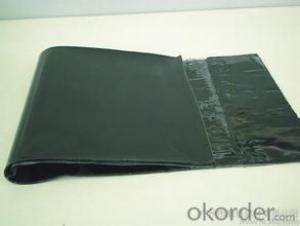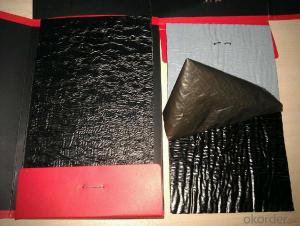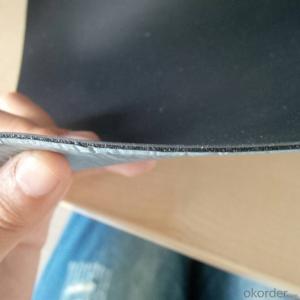Self adhensive Modified Waterproof Membrance for Roof
- Loading Port:
- Tianjin
- Payment Terms:
- TT or LC
- Min Order Qty:
- 5000 m²
- Supply Capability:
- 15000000 m²/month
OKorder Service Pledge
OKorder Financial Service
You Might Also Like
Quick Details
Type: | Waterproof Membrane | Place of Origin: | Shandong, China (Mainland) | Brand Name: | CMAX |
Model Number: | Excaid-D | thickness:1.2mm,1.5mm,2.0mm: | Raw mateiral:EPDM rubber | width:1200mm: | Standard:GB18173.1--2006 |
length:20m: | Tear strength:>=25KN/m | break tensile strength >=7.5MPa: | waterproof:0.3MPa,30min | break elongation:>=450%: | usage:building waterproof |
Packaging & Delivery
Packaging Details: | PE membrane and pallet |
Delivery Detail: | within 20 days after receiving downpayment |
Specifications
1.ISO9001,ISO14001
2.Top 3 of Chinese waterproof materials manufacturer
3.Customize product property
4.System accessories
Technical Specification:
Type | Waterproof Membrane | |||
Material | EPDM RUBBER | |||
Thickness | 1.2mm; 1.5mm;2.0mm | |||
Weight(kg/m2) | 1.2mm | 1.5mm | 2.0mm | |
1.54-1.58 | 1.79-1.83 | 2.25-2.29 | ||
Length | 20m/Roll | |||
Width | 1.2m | |||
Usage | basements, ponds, Lake, steel structure roofing, underground, tunnels etc. | |||
Packing | 24 sqm/ROLL | |||
Loading in Container | ROLLS | |||
Colors | customized | |||
Enclosure | ||||
Technical Data:
Tensile Strength N/CM | Normal temperature: ≥60 ; 60°C: ≥30 |
Breaking Elongation % | Normal temperature:≥400 ; -20°C: ≥10 |
Tear Resistance N | ≥20 |
Impermeability, 30 min no leakage | 0.3Mpa |
Low Temperature Bending °C | ≥ -20 |
Heating Shrinking mm | Extension: ≥2 Shrink:≥4 |
Heat Resistance (80°C×168h) | Tensile Strength % : ≥80 ; Keeping rate of adhesive breaking:≥70 |
Alkali resistance (10% ca (oh)2 solution,normal temperature ×168h)) | Tensile Strength % : ≥80 ; Keeping rate of adhesive breaking:≥80 |
Synthetic aging | Tensile Strength % : ≥80 ; Keeping rate of adhesive breaking:≥80
|
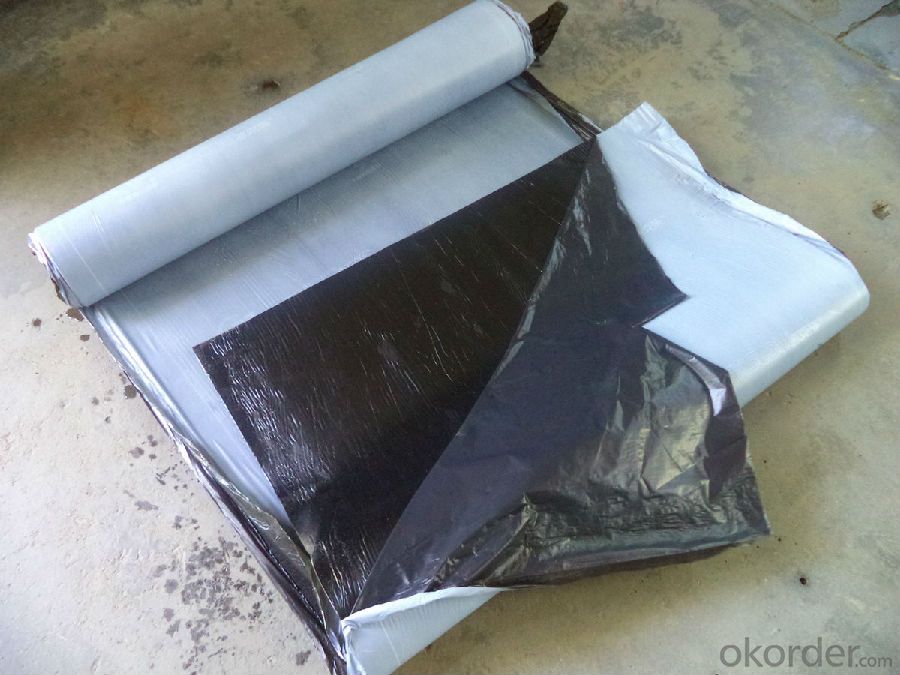
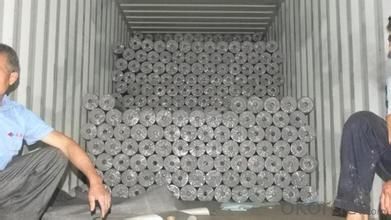
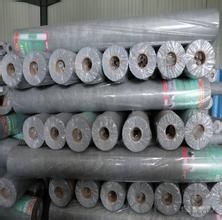
- Q:Are there any specific considerations for installing a waterproofing membrane on masonry surfaces?
- Yes, there are several specific considerations to keep in mind when installing a waterproofing membrane on masonry surfaces. Firstly, it is important to thoroughly clean and prepare the masonry surface before installing the membrane. This includes removing any loose debris, dirt, or old coatings that could hinder the membrane's adhesion. Secondly, it is crucial to choose the right type of waterproofing membrane that is suitable for masonry surfaces. Masonry surfaces can vary in terms of porosity and texture, so selecting a membrane that is compatible with the specific type of masonry is important for achieving optimal results. Additionally, it is essential to ensure proper surface preparation and priming before applying the membrane. This may involve using a primer that helps improve adhesion and creates a strong bond between the masonry and the membrane. Moreover, the installation technique plays a crucial role in the effectiveness of the waterproofing membrane. Care should be taken to apply the membrane evenly and smoothly, avoiding any gaps, wrinkles, or air bubbles that might compromise its performance. It is also important to pay attention to the manufacturer's guidelines and recommendations regarding the application method and curing time. Lastly, regular inspection and maintenance are necessary to ensure that the waterproofing membrane remains in good condition over time. This may involve periodically checking for any signs of damage, such as cracks or peeling, and promptly addressing any issues that arise. By considering these specific factors, a waterproofing membrane can be effectively installed on masonry surfaces, providing long-lasting protection against water infiltration and damage.
- Q:Are waterproofing membranes resistant to alkalis?
- Yes, waterproofing membranes are generally resistant to alkalis.
- Q:How is a waterproofing membrane installed?
- A waterproofing membrane is typically installed by first preparing the surface, such as cleaning and removing any debris. Then, a primer or adhesive is applied to the surface to ensure proper adhesion. The membrane is then rolled or laid out onto the surface, ensuring it is properly aligned and overlapping seams to prevent any potential leaks. The membrane is then pressed down firmly to remove any air bubbles and ensure a secure bond. Any additional layers or coatings may be applied as necessary.
- Q:Can a waterproofing membrane be used for a podium deck?
- Yes, a waterproofing membrane can be used for a podium deck. A waterproofing membrane is a common solution for protecting structures from water damage, including podium decks. It helps to prevent water infiltration and can ensure the longevity and durability of the deck.
- Q:Can waterproofing membranes be used on concrete pipes?
- Yes, waterproofing membranes can be used on concrete pipes. These membranes provide a protective barrier against water infiltration, preventing any potential leakage or damage to the concrete pipes.
- Q:Can a waterproofing membrane be used in cold climates?
- Indeed, a waterproofing membrane is suitable for use in cold climates. It is highly advisable to utilize a waterproofing membrane in cold climates to safeguard structures from moisture damage caused by snow, ice, and freezing temperatures. These membranes are engineered to possess flexibility and durability, enabling them to endure extreme temperature fluctuations without experiencing cracks or deterioration. They establish a barrier that thwarts water from permeating the structure, a critical factor in cold climates where water can freeze and expand, resulting in substantial harm to buildings and infrastructure. Additionally, certain waterproofing membranes are specifically formulated to excel in cold weather conditions, offering heightened resistance to freeze-thaw cycles and ensuring long-term protection against water infiltration. Therefore, it is imperative to employ a high-quality waterproofing membrane in cold climates to uphold the integrity and longevity of structures.
- Q:Can a waterproofing membrane be used on stainless steel surfaces?
- Yes, a waterproofing membrane can be used on stainless steel surfaces. The membrane helps to prevent water penetration and protect the stainless steel from corrosion or damage caused by moisture.
- Q:Can a waterproofing membrane be used for planter boxes?
- Yes, a waterproofing membrane can be used for planter boxes. A waterproofing membrane is designed to prevent water from seeping through surfaces and can be an effective solution for preventing water damage to the planter box and its surroundings. By installing a waterproofing membrane on the inside of the planter box, it creates a barrier that keeps water from reaching the underlying materials, such as wood or concrete, and helps to extend the lifespan of the planter box. Additionally, a waterproofing membrane can also help to retain moisture within the planter box, which can be beneficial for the plants growing inside. However, it is important to select a waterproofing membrane that is specifically designed for planter boxes and is safe for use with plants to ensure the best results.
- Q:Can a waterproofing membrane be used for hotels or resorts?
- Yes, a waterproofing membrane can be used for hotels or resorts. Waterproofing membranes are commonly used in the construction industry to protect various structures from water damage, including hotels and resorts. These membranes are designed to create a barrier against water infiltration, preventing leaks and moisture-related issues. They can be applied to various areas of a hotel or resort, such as roofs, basements, bathrooms, swimming pools, and balconies, to ensure long-term protection. The use of a waterproofing membrane in these establishments is essential to maintain the structural integrity, prevent water damage, and provide a comfortable and safe environment for guests.
- Q:Can a waterproofing membrane be used on roofs with rooftop gardens?
- Yes, a waterproofing membrane can be used on roofs with rooftop gardens. In fact, it is highly recommended to use a waterproofing membrane to protect the underlying structure from water damage. A rooftop garden adds additional weight and moisture to the roof, so a proper waterproofing system is essential to prevent leaks and ensure the longevity of the roof. The waterproofing membrane acts as a barrier against water infiltration and helps to keep the rooftop garden and the building below dry.
1. Manufacturer Overview |
|
|---|---|
| Location | |
| Year Established | |
| Annual Output Value | |
| Main Markets | |
| Company Certifications | |
2. Manufacturer Certificates |
|
|---|---|
| a) Certification Name | |
| Range | |
| Reference | |
| Validity Period | |
3. Manufacturer Capability |
|
|---|---|
| a)Trade Capacity | |
| Nearest Port | |
| Export Percentage | |
| No.of Employees in Trade Department | |
| Language Spoken: | |
| b)Factory Information | |
| Factory Size: | |
| No. of Production Lines | |
| Contract Manufacturing | |
| Product Price Range | |
Send your message to us
Self adhensive Modified Waterproof Membrance for Roof
- Loading Port:
- Tianjin
- Payment Terms:
- TT or LC
- Min Order Qty:
- 5000 m²
- Supply Capability:
- 15000000 m²/month
OKorder Service Pledge
OKorder Financial Service
Similar products
New products
Hot products
Hot Searches
Related keywords

